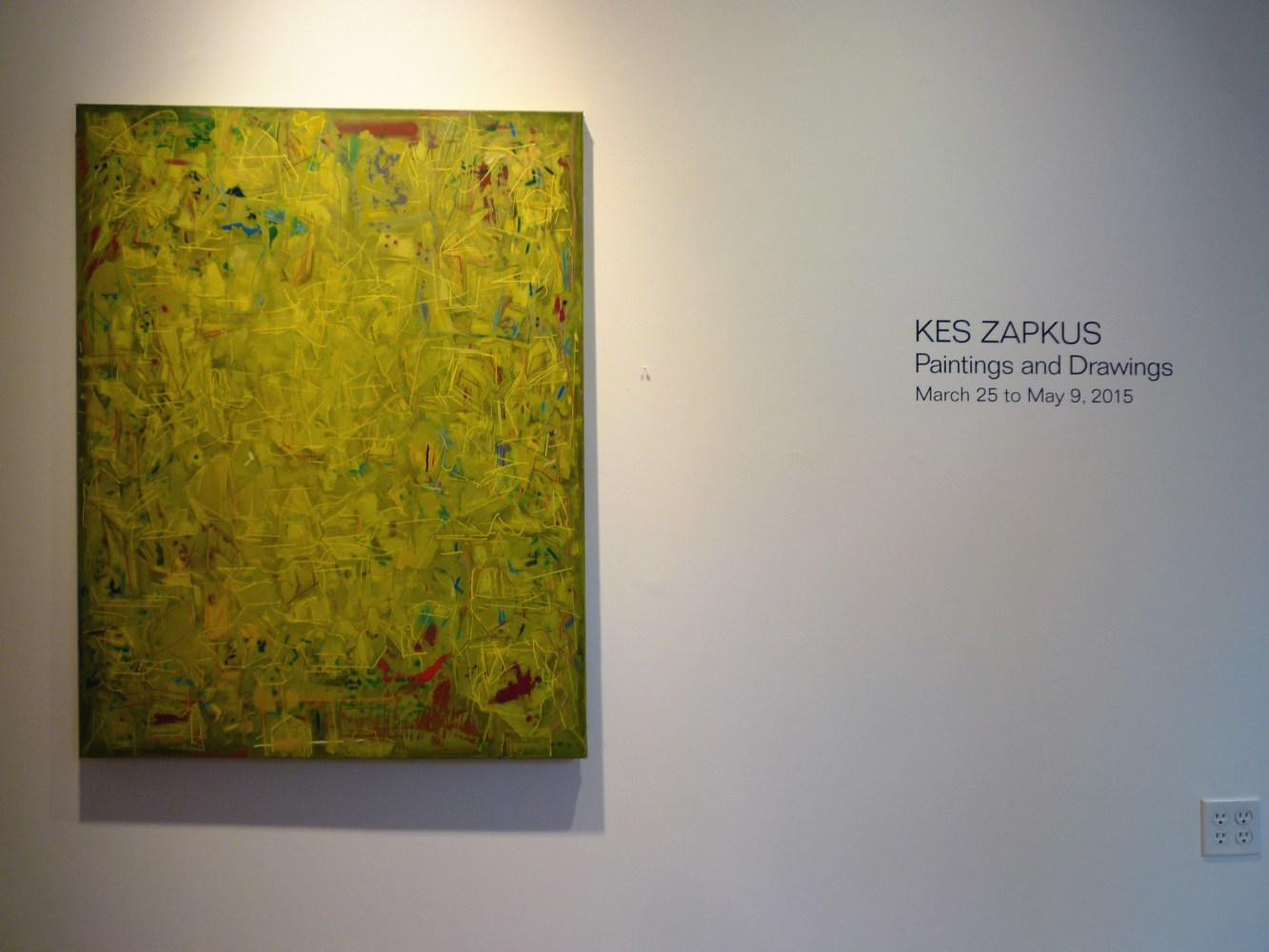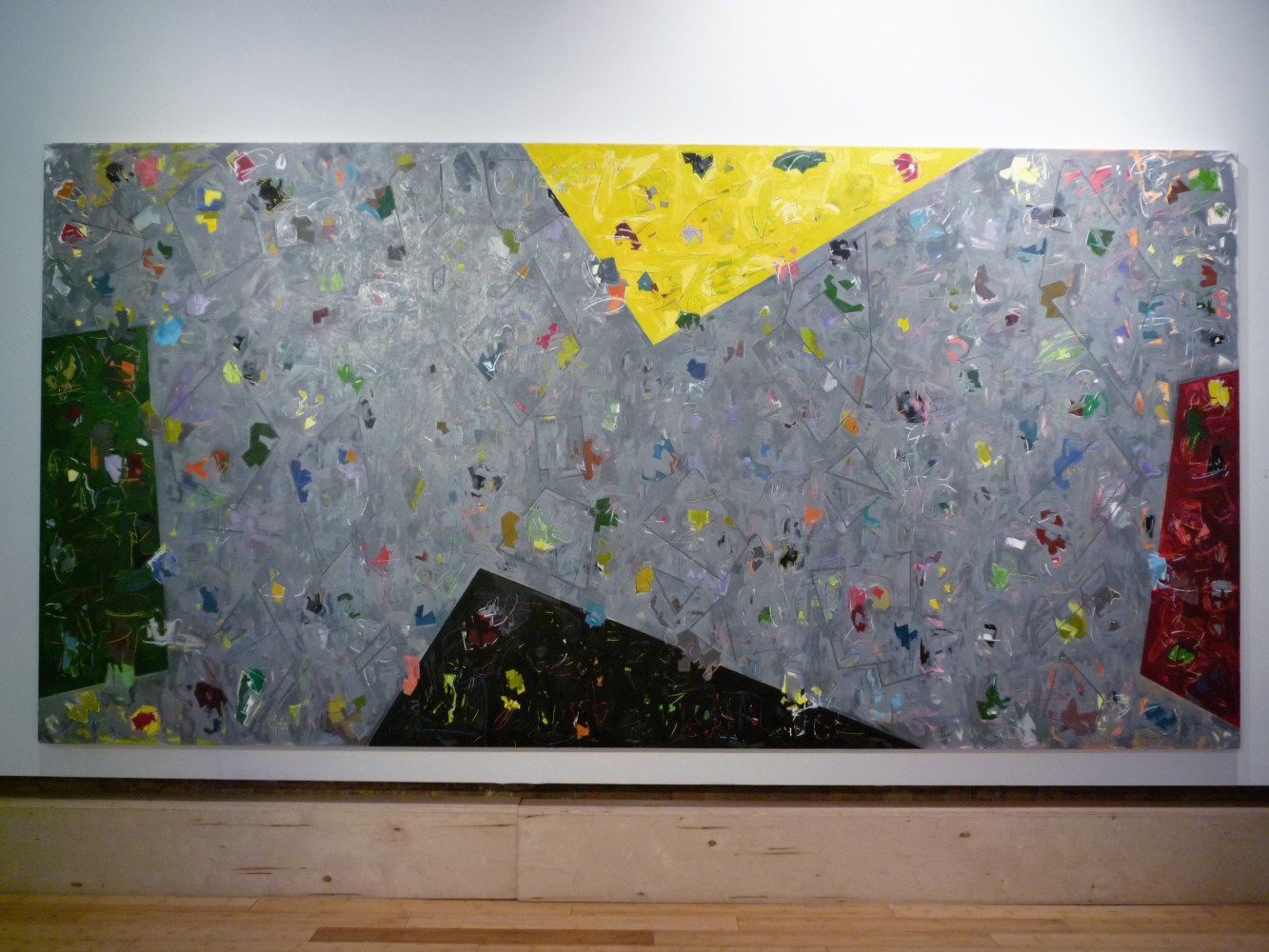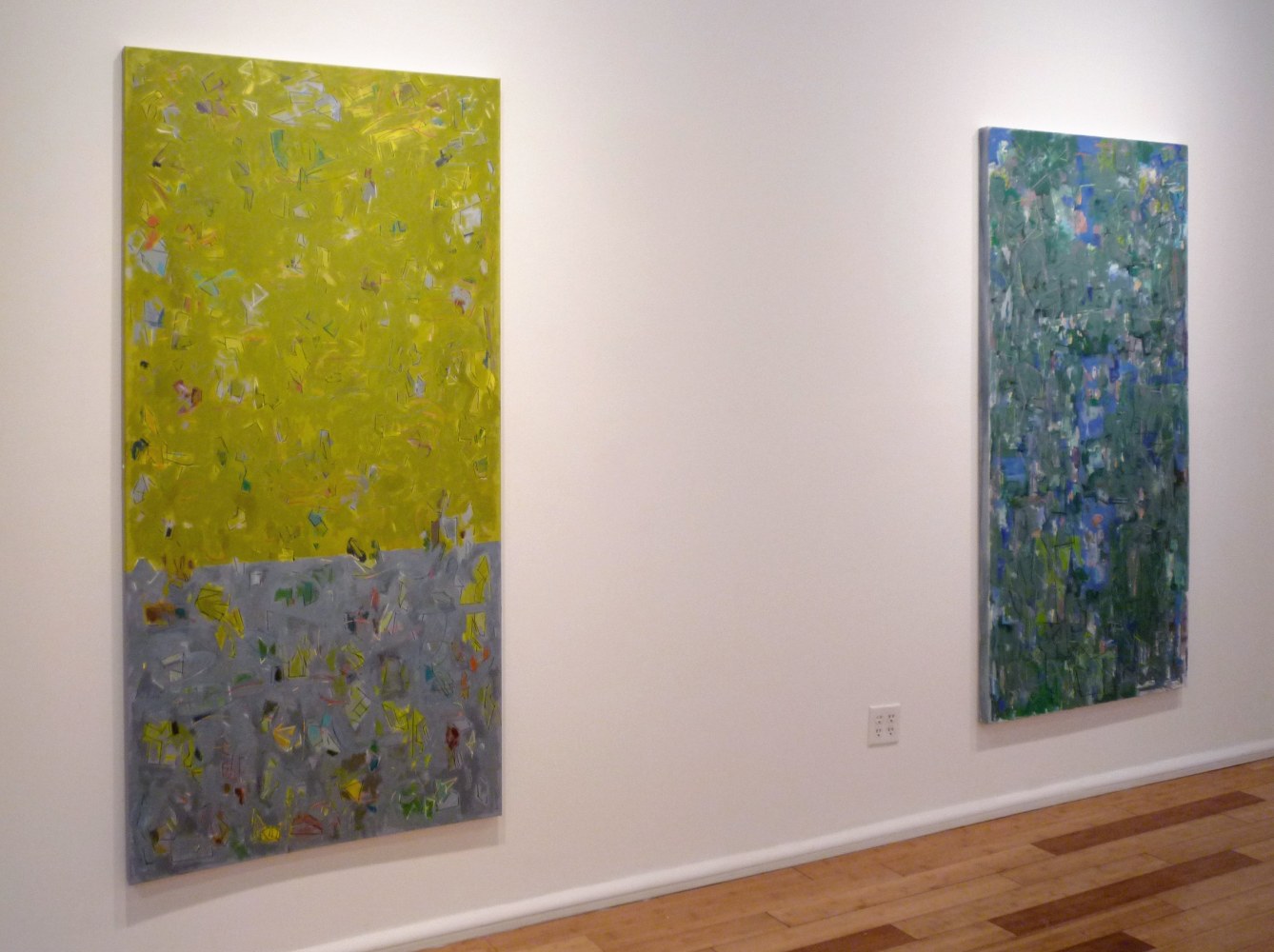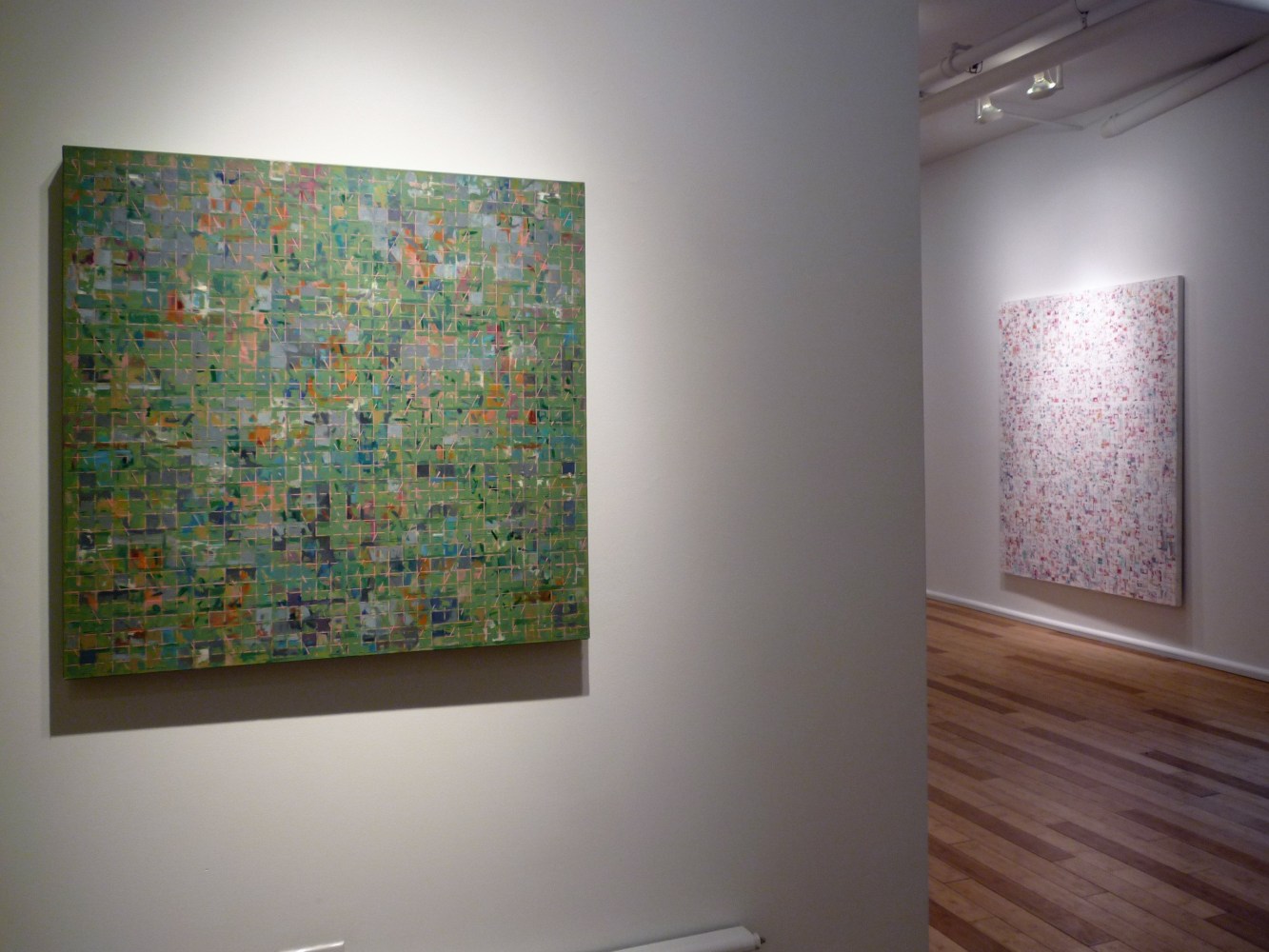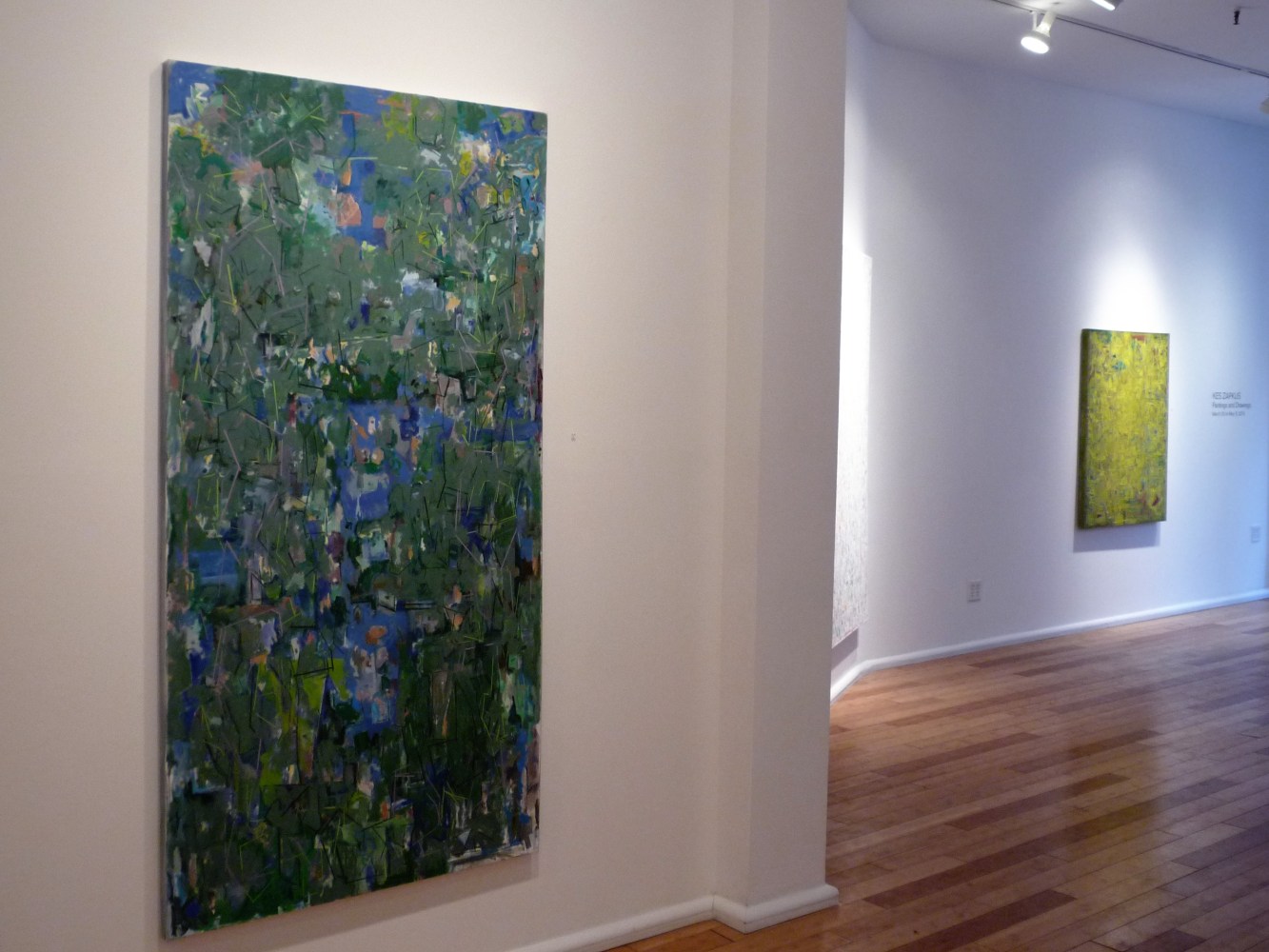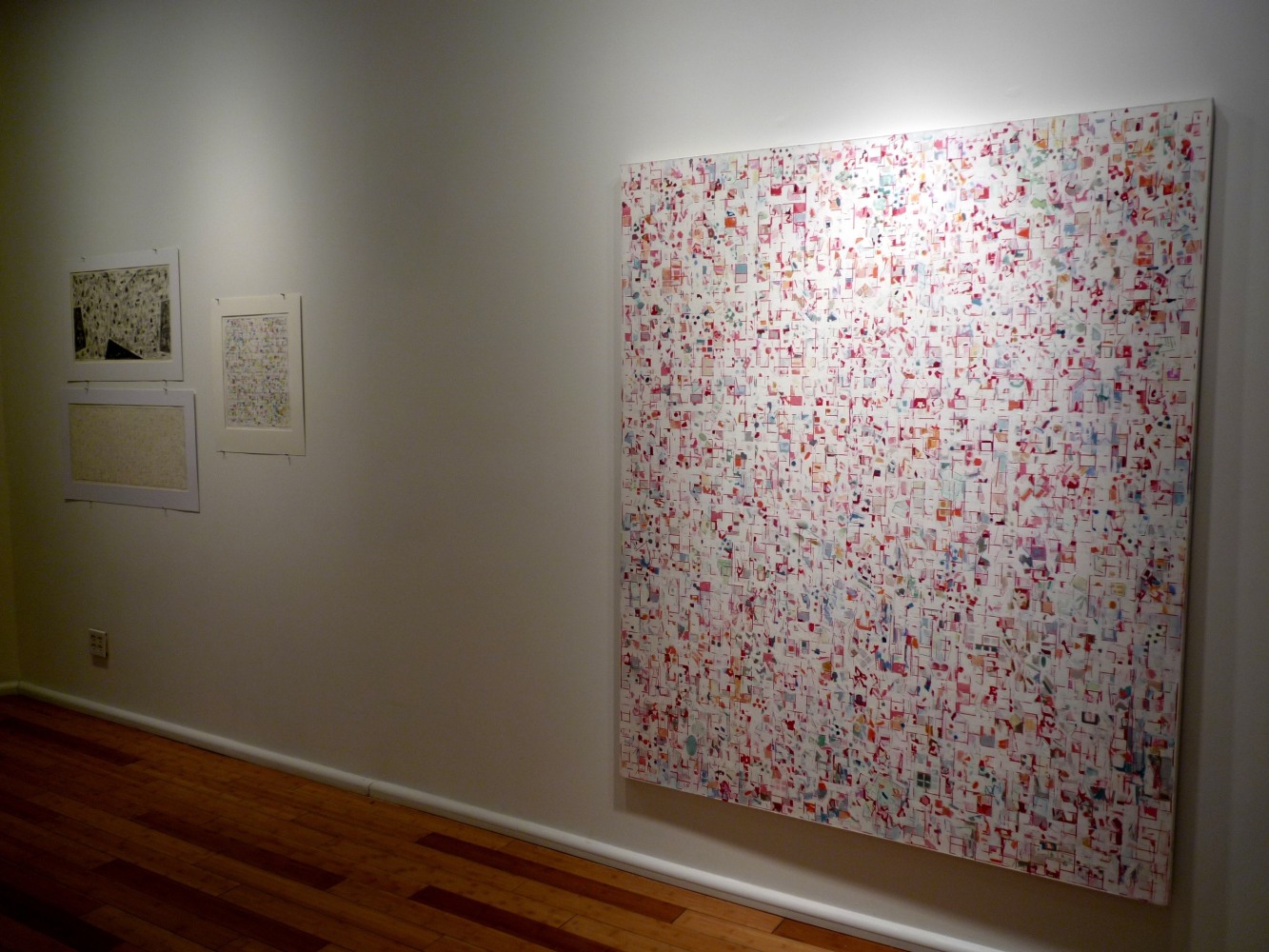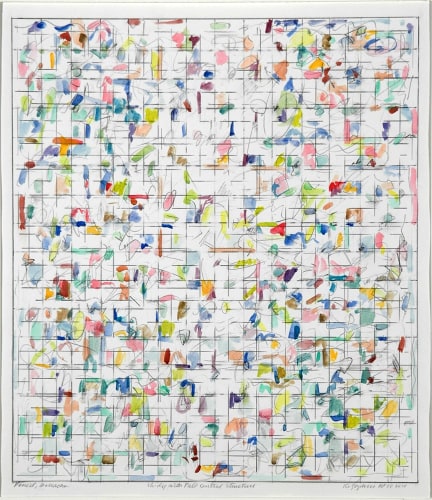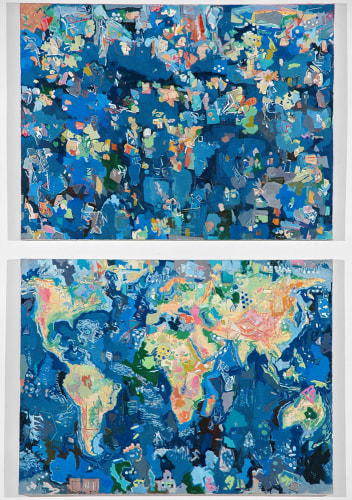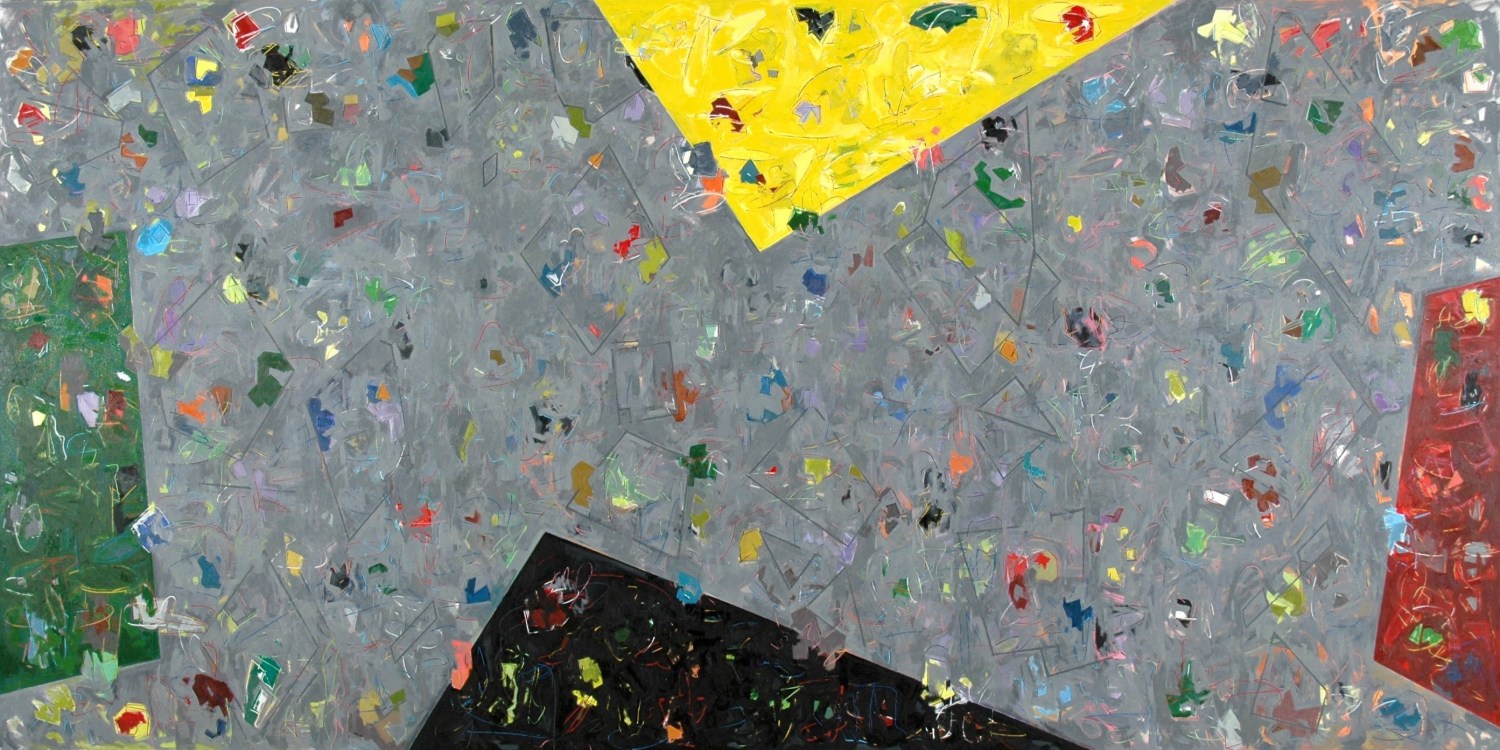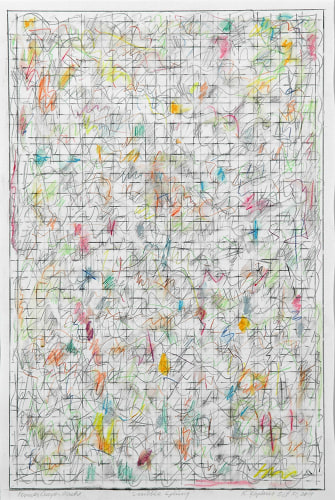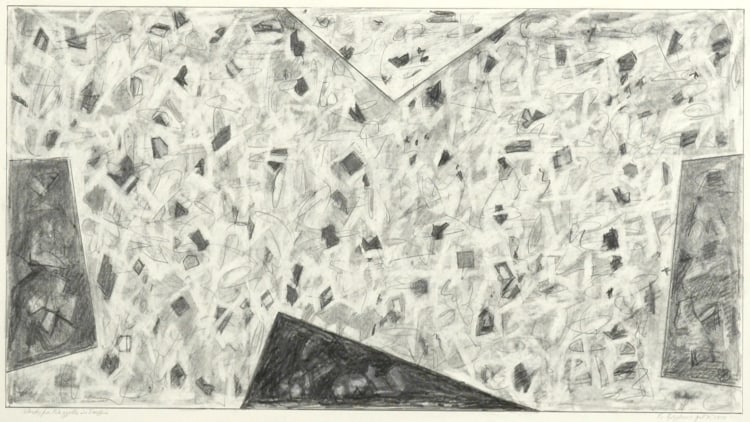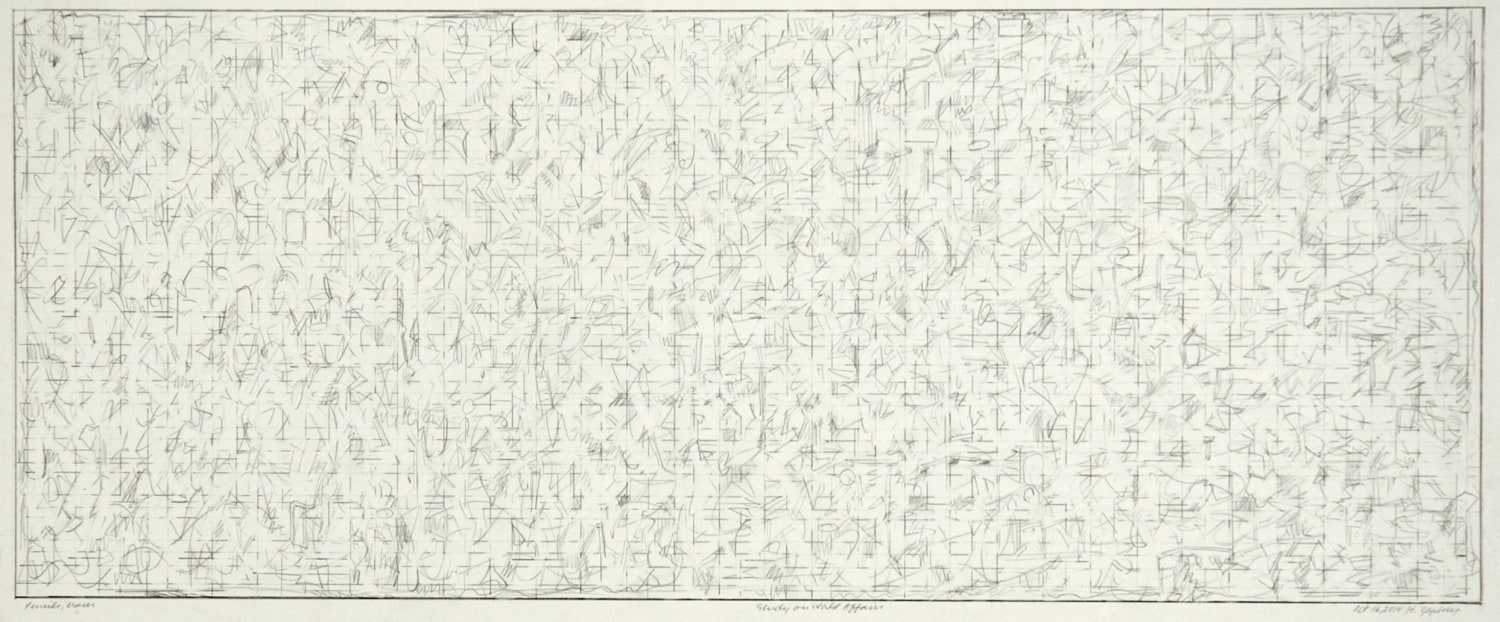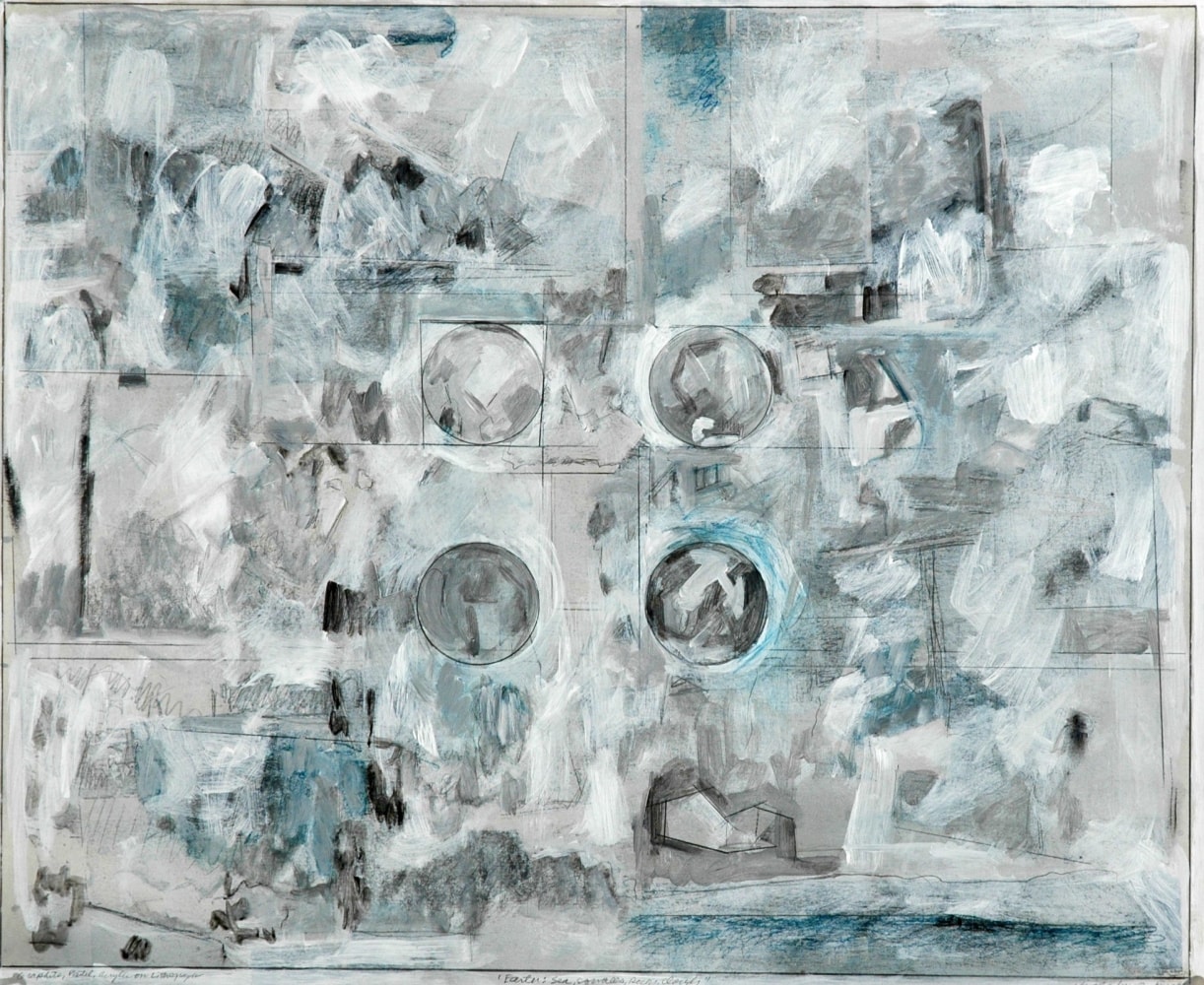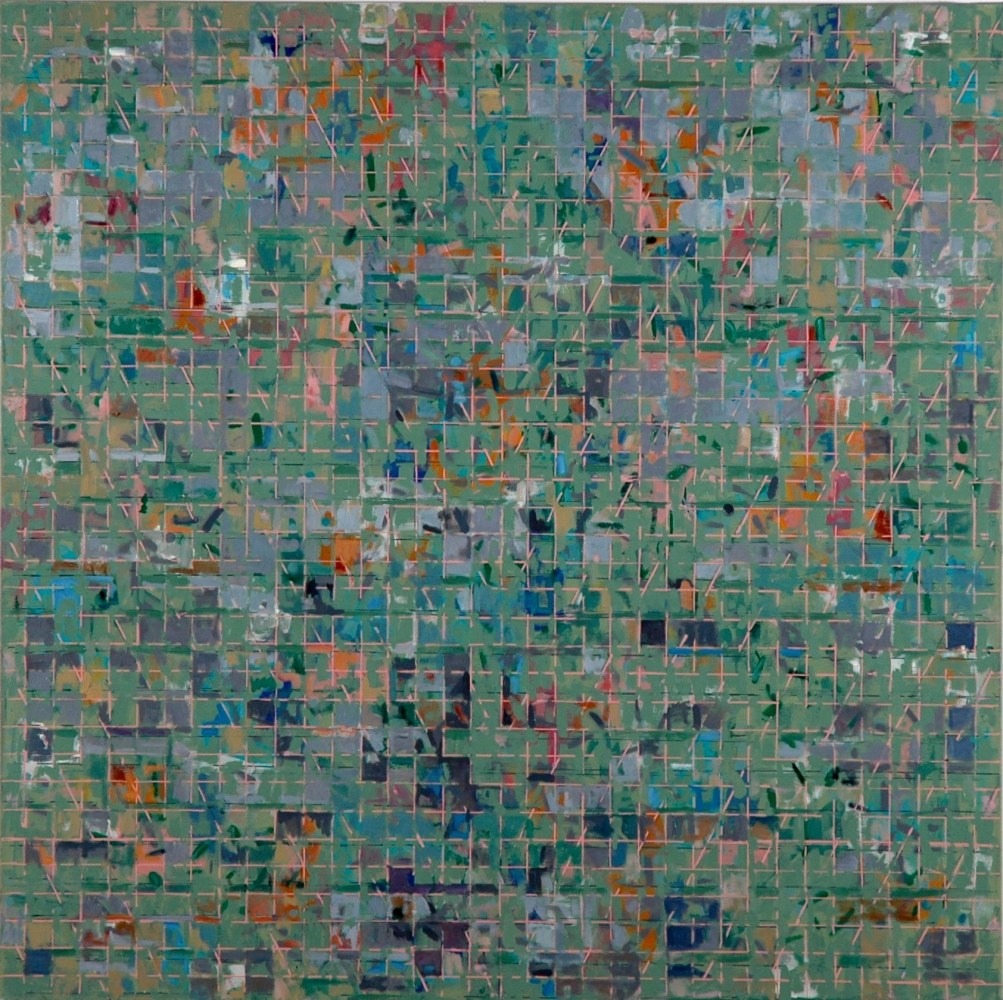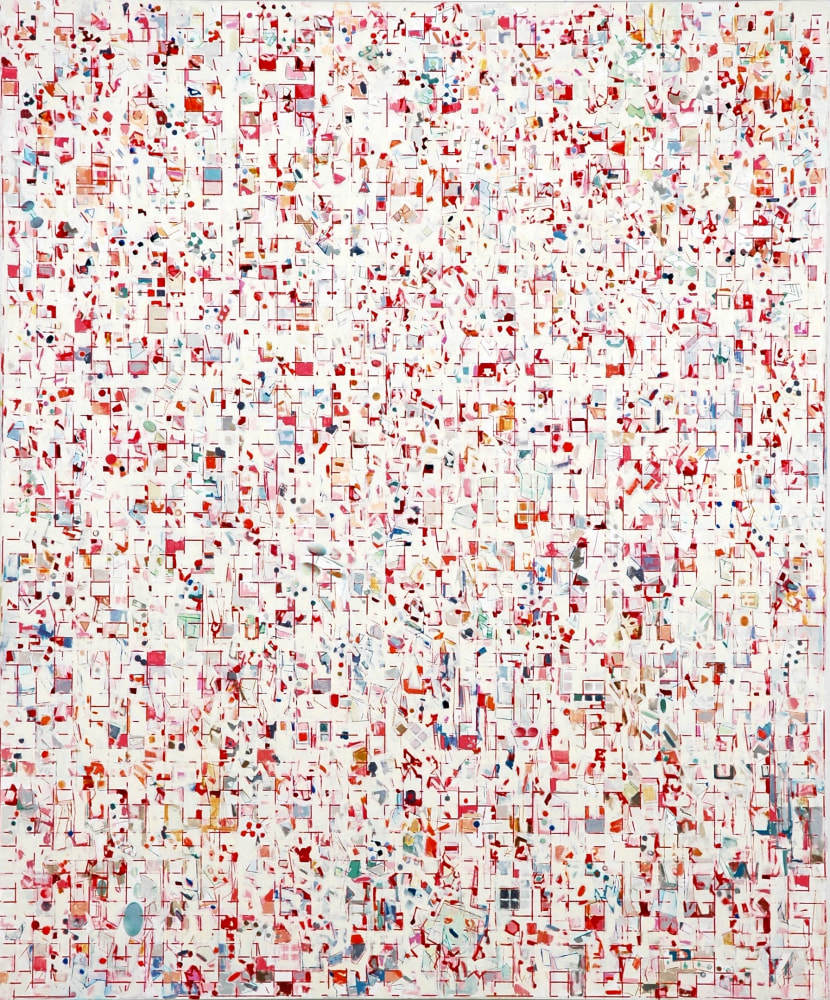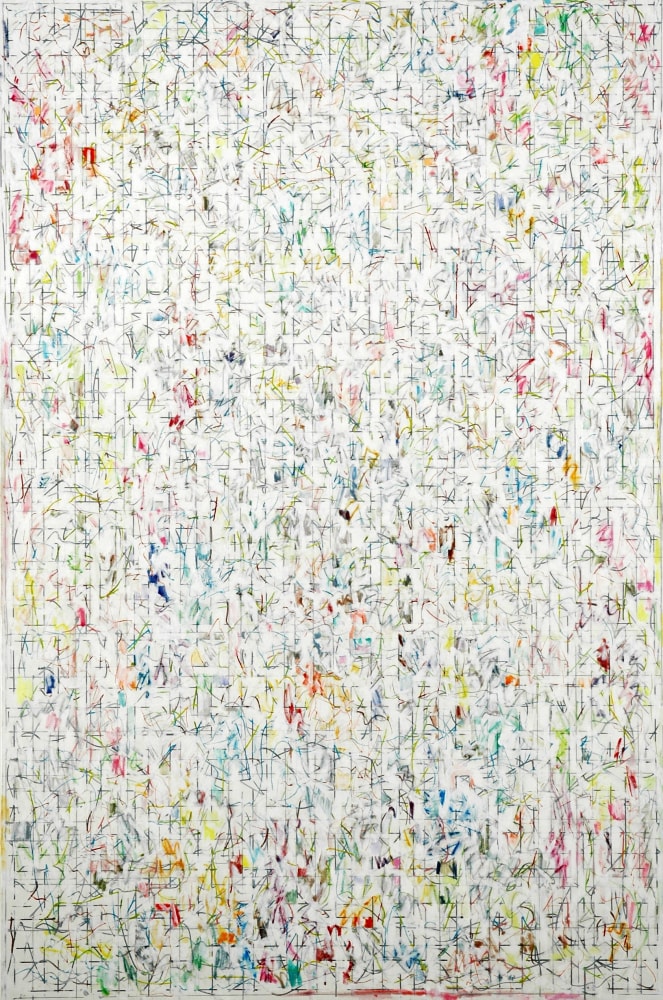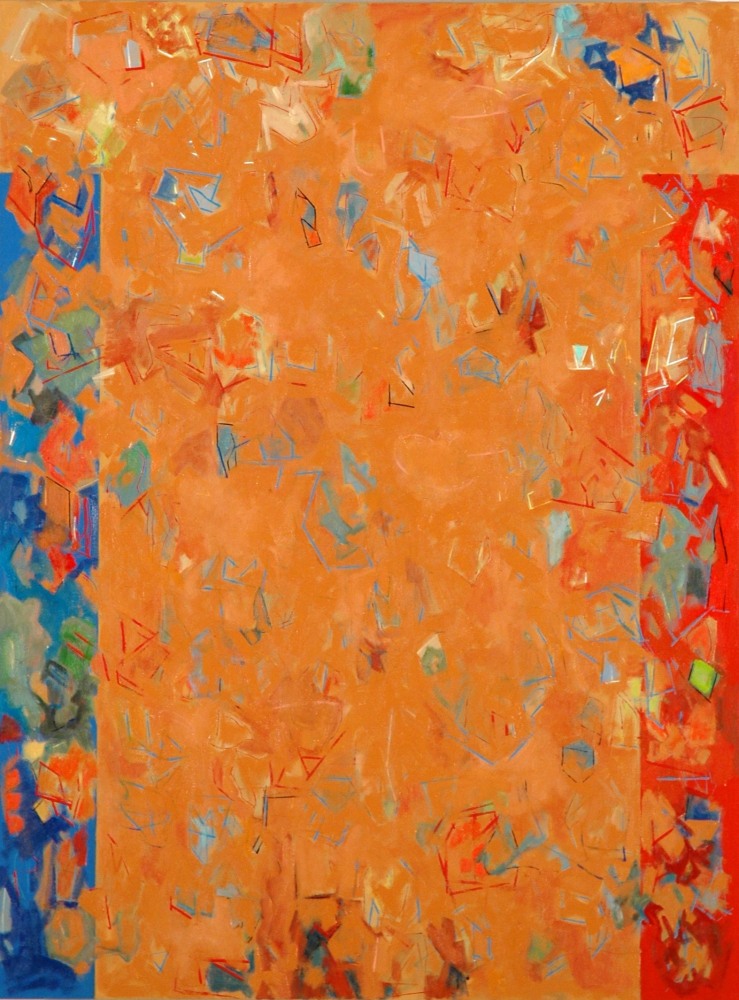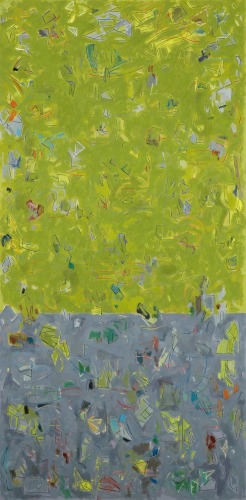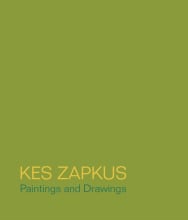Kes Zapkus
Paintings and Drawings
Wednesday, March 25 – Saturday, May 9, 2015
William Holman Gallery is pleased to present an exhibition of the paintings and drawings by Kes Zapkus. This is the first show of his work since a major retrospective at the National Gallery of Art (NDG) in Vilnius, Lithuania last spring.
For Zapkus, his painting could be identified as “content generated abstraction.” The titles to his works indicate the content being pursued. While understanding painting’s historical, cumulative visual identity, Zapkus intentionally eliminates depiction as his paintings’ primary goal. As the camera records the visible, his painting envisions meaning by visual discourse in associative passages and structures. The works engage in a dialectic, in which humanist and aesthetic issues are presented through an abstract visual language. The paintings channel the simultaneous qualities of physical and virtual worlds of memory, experience, and technology and how these interact with one another.
Zapkus’s painting incorporates his vision of an image as a total informational field. His fascination with the possibility of painting relating to classical music composition, not in terms of sound passing in time (the listener’s), but from the composer’s viewpoint of musical architecture. This is where the symphony in its thousand measures and orchestrations exists as a fixed, stretched out equilibrium, where present and past and future ideas are reasoned aspects of an established equation. Envisioning a total work as a substance, like a complete book in its structure (as James Joyce’s Ulysses) and not as pieces of narration moving through time, is a parallel Zapkus aspires to.
This group of paintings and drawings crosses several decades of work not previously shown in New York. From more rigorous grid anchoring, to loose organic structuring, the exhibition shows two polarities. Work favoring a classicizing attitude, gradually evolves towards the expressive and romantic. These polarities reflect the cyclical changes throughout his painting career as the following descriptions indicate.
Drifting (Mental and Continental), a vertical diptych, is a whimsical interpretation of continental drift. The lower panel shows the recognizable continents, hinting to the corresponding contours between them. The rendering is thematic rather than scientific, the ocean shelf and tectonic movement is shown with hypothetical linear stress points and other painterly embellishments. The upper panel of this diptych is a free form pendant to the lower panel – a scrambling of the fragments of the continents and diagrammatic signs into what Zapkus calls “a mental mix.” The work represents an accumulative mixing of information, as though one were in a reverie, and hints at the equivocation of all in mental processing.
Piazzolla in Traffic combines two ideas. Piazzolla of the title references Ástor Piazzolla, a radical Argentine composer positioned between classical and secular pop aesthetics. Traffic is the title of one of Zapkus’s own painting from 1975, which was a radical and innovative work for his career. Traffic consisted of a quartet of four abrasively oblique panels, which attempted to find resolution into classical aesthetic balance. In musical architecture – measure to measure, forward and back, theme and variation - builds a whole. Piazzolla in Traffic is likewise constructed of small units making a whole as a sum of the parts. The experience is an inclusive summation of these particular references, discordant yet co-dependent. The four panels quoted from Traffic, 1975 are joined with spinning individual configurations (as if tango couples dancing) in a modulated, pulsating, gray arena. The work is an ambitious summary of Zapkus’s painterly evolution.
Kes Zapkus was born in Lithuania as an American citizen in 1938. He received his BFA from The School of The Art Institute of Chicago and was awarded the Ryerson Foreign Travel Fellowship. He earned an MFA from Syracuse University in 1963. Zapkus has exhibited and been collected extensively domestically and internationally and has held teaching positions at University of Pennsylvania, The Vilnius Academy of Art, Cooper Union, Parsons School of Design, Princeton and SUNY at Stony Brook.
In commemoration of Zapkus’s retrospective at the National Gallery of Art in Lithuania, an inclusive monograph on his work was published with essays by Lucy R. Lippard, Marjorie Welish, Sandra Skurvida and the artist on his work (in English and Lithuanian) This monograph Kestutis Zapkus is available for purchase ($50) at the William Holman Gallery.

